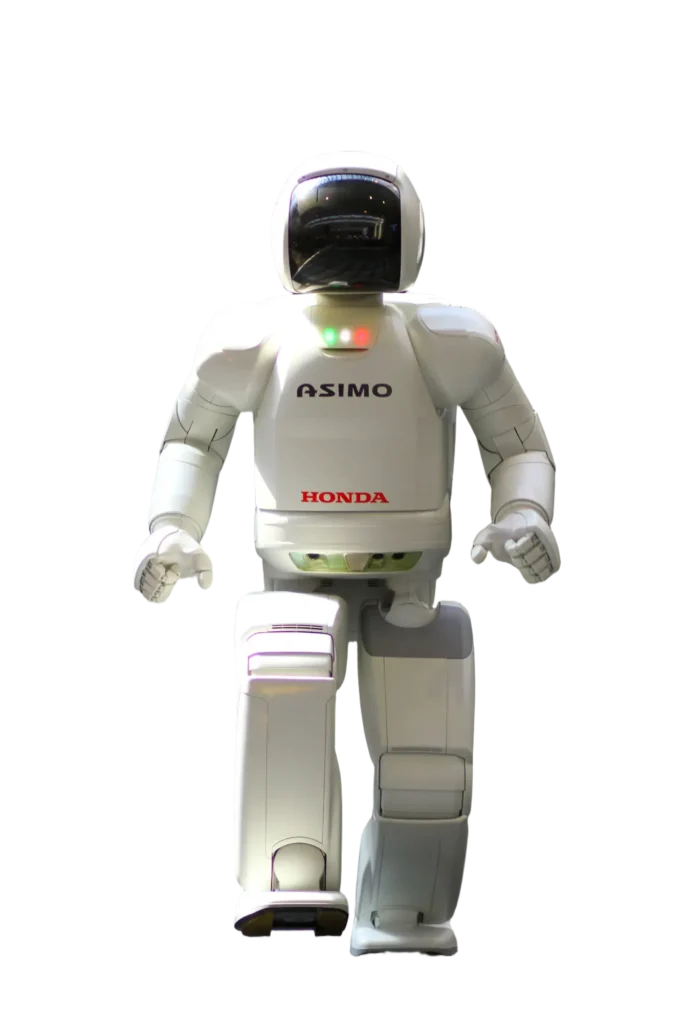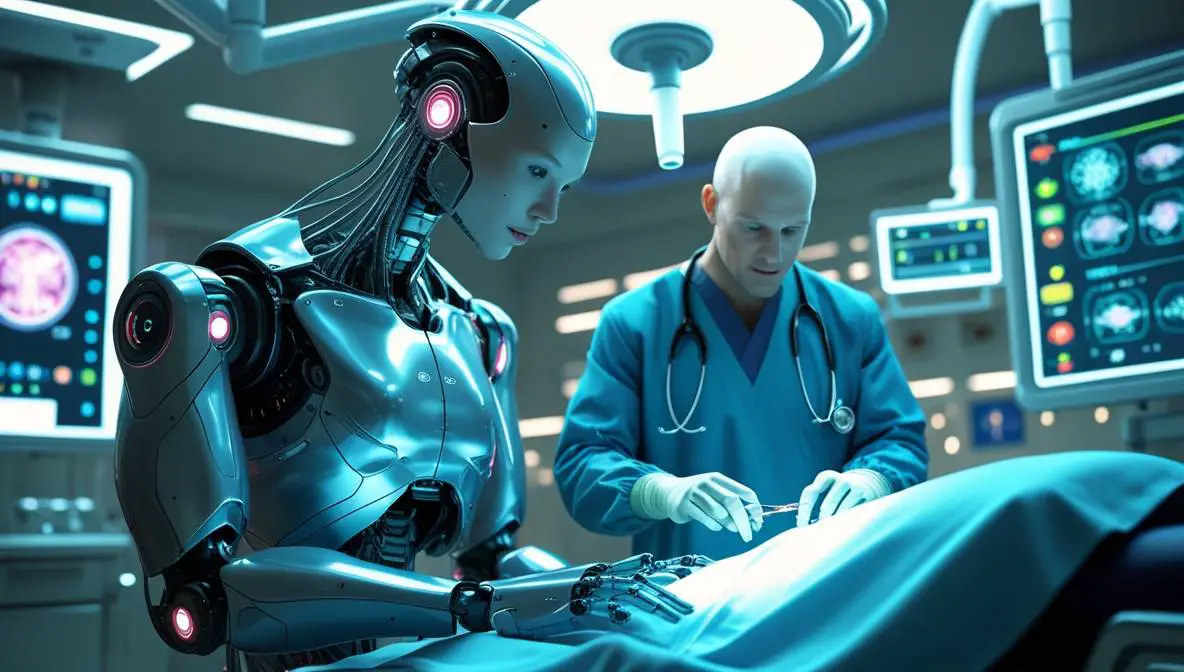Humanoid robots 2030 will redefine human-machine interaction through unprecedented advancements in artificial intelligence, mobility, and sensory capabilities. By the end of the decade, these machines will transition from experimental prototypes to integral components of industries, healthcare, and households. This article examines key technological breakthroughs, societal implications, and sector-specific applications anticipated by 2030.
A Brief History of Humanoid Robotics
Humanoid robots have come a long way since the early prototypes. ASIMO by Honda, Sophia by Hanson Robotics, and Atlas by Boston Dynamics have set benchmarks in robotic development. With continued advancements in machine learning, natural language processing (NLP), and biomechanical engineering, humanoid robots are becoming more lifelike and capable.
| Milestone | Robot Name | Key Features |
|---|---|---|
| 2000 | ASIMO (Honda) | First humanoid robot with stable bipedal walking, speech recognition, and gesture response. |
| 2016 | Sophia (Hanson Robotics) | AI-driven conversations, facial expressions, and social interaction capabilities. |
| 2020 | Atlas (Boston Dynamics) | Advanced mobility with backflips, dynamic balancing, and obstacle navigation. |
| 2023 | Optimus (Tesla) | General-purpose humanoid robot designed for manual labor, featuring AI-powered motion planning. |
| 2025 (Projected) | Ameca (Engineered Arts) | AI-powered conversational capabilities, hyper-realistic facial expressions, and advanced dexterity. |
ASIMO (Honda) – 2000

Sophia (Hanson Robotics) – 2016

Atlas (Boston Dynamics) -2020

Optimus (Tesla) -2023

Ameca (Engineered Arts) – 2025

Technological Advancements Driving Humanoid Robotics
1. AI and Machine Learning Integration
Modern humanoid robots rely on neural networks trained for object recognition, natural language processing, and decision-making. By 2030, advancements in quantum computing and edge AI will enable real-time adaptive learning. Systems like OpenAI’s GPT-5 and proprietary models from companies such as Boston Dynamics will allow robots to process complex instructions with minimal latency.
| Current Capability | 2030 Projection |
|---|---|
| Pre-programmed responses | Context-aware autonomous decisions |
| Basic emotional recognition | Empathic interaction algorithms |
| Limited environmental adaptation | Dynamic problem-solving in unstructured environments |
2. Enhanced Mobility and Dexterity
Legged and bipedal robots will achieve near-human agility. Innovations in hydraulic actuators, synthetic muscles, and lightweight materials (e.g., graphene composites) will improve energy efficiency and load-bearing capacity. For example, Tesla’s Optimus Gen-2 is projected to navigate stairs, uneven terrain, and industrial settings with 98% success rates by 2030.
3. Sensory and Haptic Feedback Systems
Tactile sensors and LiDAR will evolve to provide sub-millimeter precision. Humanoids will detect textures, temperatures, and pressure gradients, enabling tasks like surgical assistance or delicate manufacturing. Research from MIT’s Computer Science and Artificial Intelligence Laboratory (CSAIL) suggests that haptic feedback systems will reduce error rates in robotic surgery by 40%.
Sector-Specific Applications
1. Healthcare and Elderly Care
Humanoid robots will address labor shortages in healthcare. Models like Japan’s ROBEAR will assist in lifting patients, administering medication, and monitoring vital signs. By 2030, 25% of elderly care facilities in developed nations may deploy humanoids for routine tasks.
2. Industrial Automation
Factories will adopt humanoids for roles requiring flexibility. Unlike traditional robotic arms, humanoids can switch between assembly, quality control, and logistics. Hyundai’s collaboration with Boston Dynamics aims to integrate humanoids into automotive production lines by 2026.
3. Disaster Response and Security
Humanoids equipped with thermal imaging and gas sensors will operate in hazardous environments. The U.S. Department of Defense’s Advanced Robotics for Manufacturing (ARM) Institute predicts that 15% of disaster response teams will use humanoids for search-and-rescue missions by 2030.
For insights on mobility engineering, refer to our analysis of humanoid robot development.
Challenges and Limitations
1. Energy Consumption and Battery Life
Current humanoids operate for 90 minutes on average. Solid-state batteries and wireless charging stations may extend uptime to 8 hours, but power demands for advanced AI remain a barrier.
2. Ethical and Regulatory Concerns
Autonomous humanoids raise questions about accountability, data privacy, and job displacement. The European Union’s AI Act will likely mandate strict transparency requirements for robotic systems by 2027.
Explore advancements in automation through our coverage of DeepSeek Technology.
3. Public Acceptance
Cultural resistance persists in regions wary of AI dominance. Surveys indicate that 60% of respondents in North America distrust humanoids for childcare, compared to 35% in Asia.
Economic Impact of Humanoid Robotics
The global humanoid robot market is projected to grow from $1.6 billion in 2025 to $13.8 billion by 2030. Key economic shifts driving this growth include:
- Labor Markets: 12-18% of repetitive manual jobs may be automated.
- New Industries: Robot maintenance, AI training, and ethical oversight roles will emerge.
- Cost Reduction: Manufacturing costs for humanoids will drop by 50% due to scaled production.
For related discussions on autonomous systems, see our article on drones and drone technology.
Ethical Frameworks and Policy Development
By 2030, international standards for humanoid deployment will likely address:
- Data Security: Encryption protocols for robots handling sensitive information.
- Bias Mitigation: Audits of AI decision-making algorithms.
- Human Oversight: Legal requirements for human-in-the-loop systems in critical applications.
External Link: Stanford Institute for Human-Centered AI
Future Research Directions
- Swarm Intelligence: Coordination between multiple humanoids for large-scale tasks.
- Neuromorphic Computing: Brain-inspired chips to enhance learning efficiency.
- Biodegradable Materials: Sustainable components to reduce environmental impact.
For context on emerging tech markets, our blog category offers additional insights.
